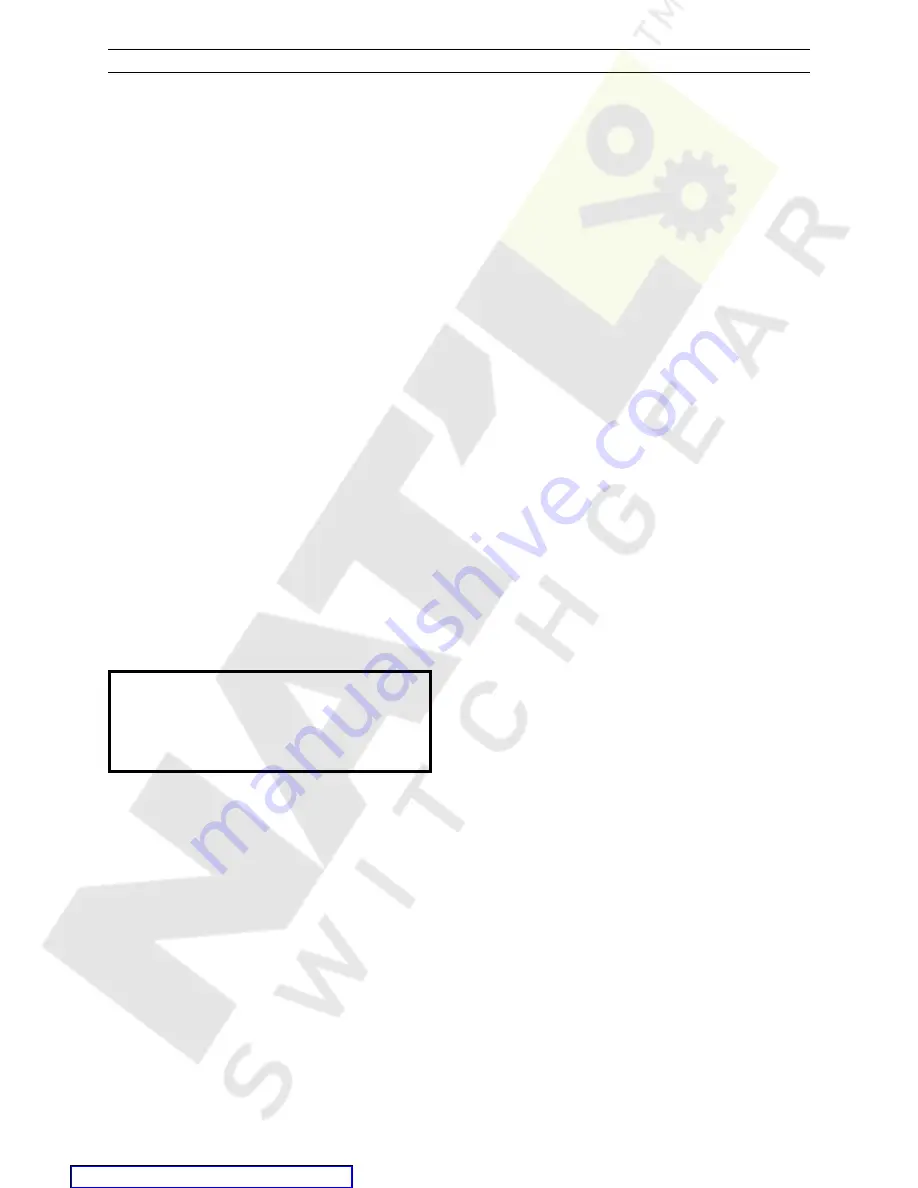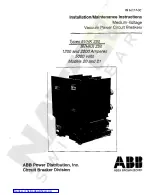
11
PowerVac
®
5kV Vertical Lift
Chapter 4. Installation
4-1 Breaker Preparation
Prior to interfacing the breaker into the
switchgear cell, rub a small amount of
0282A2048P009 red grease, provided with the
breaker, on the silvered portion of the breaker
studs, ground shoe, and 16 secondary coupler
pins, to form a thin coating for contact pur-
poses.
4-2 Equipment Test Position
In most AM breaker Metal-Clad Switchgear
units, there is a breaker “Test Position” which
allows you to functionally test the breaker with-
out connecting to the bus. This position is low-
ered fully down from the breaker being fully con-
nected into the cubicle. When in the “test posi-
tion”, a secondary coupler cable must be used
to connect the secondary control circuits for
electrical breaker operation.
While in the test position, the breaker interlock
is not activated. The interlock roller will not
rest in the lower “Vee” notch in the equipment
interlock cam plate allowing the operator to
close and open the breaker electrically or manu-
ally (see Figure 6).
The breaker positive interlock system should
be checked while in the test position prior to
elevating the breaker.
WARNING:
FAILURE TO PROPERLY VERIFY
ALL BREAKER SWITCHGEAR INTERFACES
AND PROPER POSITIVE INTERLOCK OPERA-
TION COULD RESULT IN A BREAKER OP-
ERATIONAL FAILURE.
4-3 Positive Interlock
The positive interlock system prevents connect-
ing or disconnecting the breaker in the cubicle,
when the breaker is in the closed position and
the vacuum contacts are closed.
This interlock feature is accomplished by a roller
and lever located on the interlock shaft, on the
right side of the breaker. (Figures 1, 4 and 6)
The positive interlock lever (roller) provides a
trip-free and discharged condition when rack-
ing the breaker in the connected or disconnect
position. When the breaker is raised or lowered,
the positive interlock roller and lever are forced
forward by the postitive interlock cam on the
right side of the switchgear cell. The interlock
roller and lever are held in this forward position
during raising and lowering operations, prevent-
ing the breaker from being closed in any inter-
mediate position between the connect and the
fully lowered position. Any attempt to charge
the breaker will cause the stored energy springs
to automatically discharge without the breaker
contacts closing or moving. The breaker must
be fully connected (raised) and the clutch handle
must be released before the breaker can be
closed. Releasing the clutch handle allows the
interlock cam plate in the cell to move down-
ward allowing the interlock roller and lever to
return to their normal vertical positions. The
breaker may then be closed.
The following positive interlock adjustments are
made at the factory and verified for proper op-
eration per Figure 6. The distance from the top
of the stationary flag to the top of the switchgear
guide rails is set. This maintains the surface
upon which the breaker wheels rest when the
breaker is lowered. The upper elevating motor
limit switch is then adjusted to achieve a roller
to flag clearance of 1/16" to 1/8" as shown in
Figure 6. The limit switch de-energizes the el-
evating motor circuit and should be activated
when the primary disconnects and secondary
coupler reach their nominal contact penetration
position. If the timing of this sequence is off,
the cell must be adjusted back to factory speci-
fications.
Typical instructions for making adjustments to
the cell positive interlock cam as provided with
the original equipment are outlined in Figure 6
and Figure 53.









































